NASA's Hubble Space Telescope is back in action after its most recent upgrade, with a spectacular array of new images showing off the telescope's new capabilities.
The first images — a closely guarded secret until today — were of galaxy NGC 6217. The picture was taken with NASA's newly refurbished Advanced Camera for Surveys (ACS).
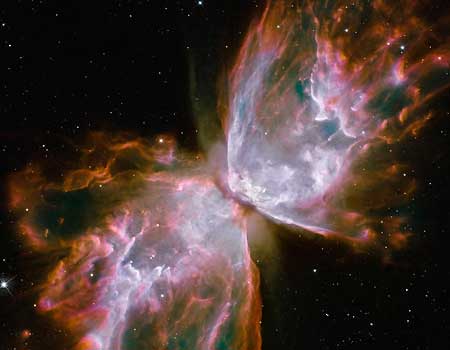
Celestial Butterfly
This celestial object looks like a delicate butterfly, but it's far from serene: what resemble the dainty butterfly wings are actually roiling cauldrons of gas heated to more than 36,000 degrees Fahrenheit.
The gas is tearing across space at more than 600,000 miles an hour -- fast enough to travel from Earth to the moon in 24 minutes.
Source: NASA
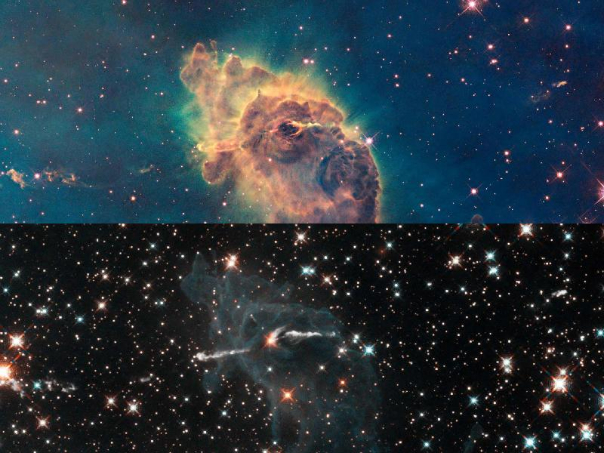
Carina Nebula
These two images of a huge pillar of star birth demonstrate how observations taken in visible and in infrared light by NASA's Hubble Space Telescope reveal dramatically different and complementary views of an object.
Composed of gas and dust, the pillar resides in a tempestuous stellar nursery called the Carina Nebula, located 7,500 light-years away in the southern constellation Carina.
Source: NASA
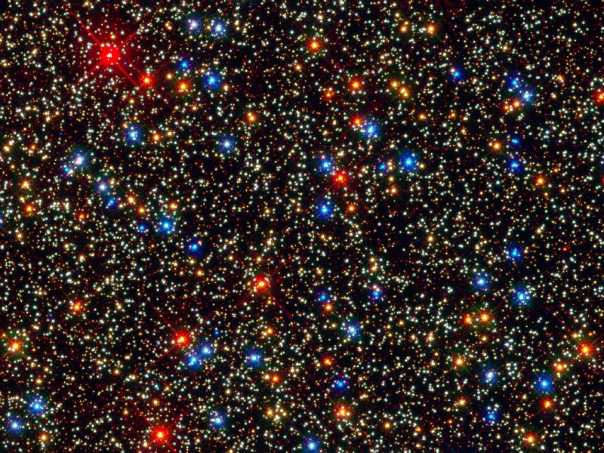
Omega Centauri
The Hubble Telescope snapped this panoramic view of a colorful assortment of 100,000 stars residing in the crowded core of a giant star cluster.
The image reveals a small region inside the massive globular cluster Omega Centauri, which boasts nearly 10 million stars. Globular clusters, ancient swarms of stars united by gravity, are the homesteaders of our Milky Way galaxy. The stars in Omega Centauri are between 10 billion and 12 billion years old. The cluster lies about 16,000 light-years from Earth.
Source: NASA
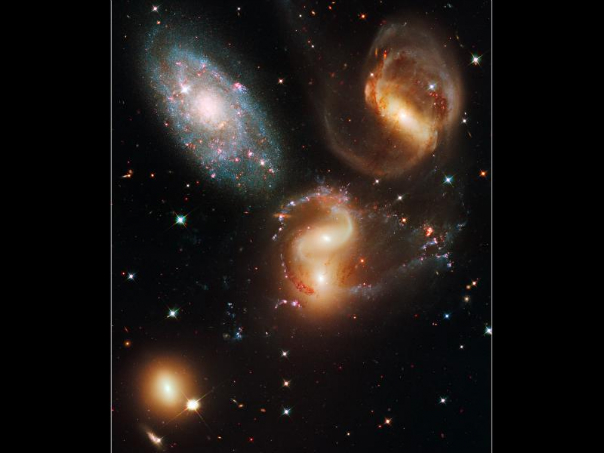
Stephan's Quintet
A clash among members of a famous galaxy quintet reveals an assortment of stars across a wide color range, from young, blue stars to aging, red stars.
This portrait of Stephan's Quintet, also known as Hickson Compact Group 92, was taken by the new Wide Field Camera 3 (WFC3) aboard NASA's Hubble Space Telescope. Stephan's Quintet, as the name implies, is a group of five galaxies. The name, however, is a bit of a misnomer. Studies have shown that group member NGC 7320, at upper left, is actually a foreground galaxy about seven times closer to Earth than the rest of the group.
Source: NASA
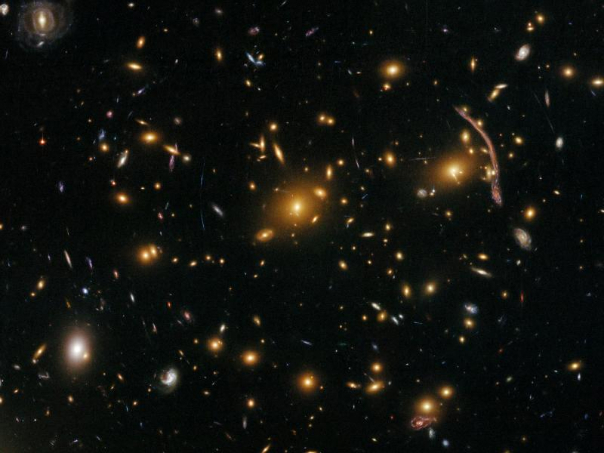
Abell Galaxy Cluster
The Hubble Space Telescope's newly repaired Advanced Camera for Surveys (ACS) has peered nearly 5 billion light-years away to resolve intricate details in the galaxy cluster Abell 370.
Abell 370 is one of the very first galaxy clusters where astronomers observed the phenomenon of gravitational lensing, where the warping of space by the cluster's gravitational field distorts the light from galaxies lying far behind it. This is manifested as arcs and streaks in the picture, which are the stretched images of background galaxies.
Source: NASA
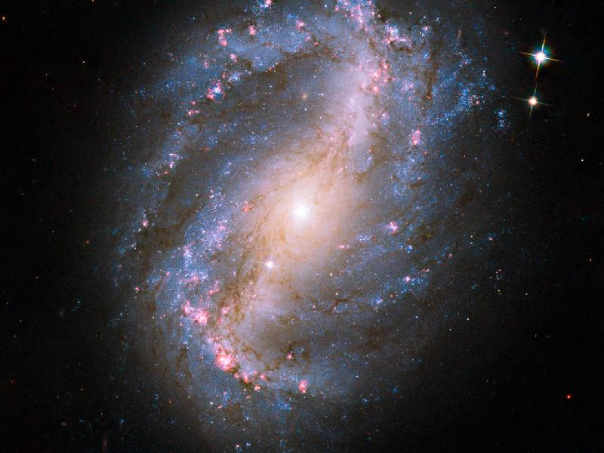
Barred Spiral Galaxy
This image of barred spiral galaxy NGC 6217 is the first image of a celestial object taken with the newly repaired Advanced Camera for Surveys (ACS) aboard the Hubble Space Telescope. The camera was restored to operation during the STS-125 servicing mission in May to upgrade Hubble.
The barred spiral galaxy NGC 6217 was photographed on June 13 and July 8, 2009, as part of the initial testing and calibration of Hubble's ACS. The galaxy lies 6 million light-years away in the north circumpolar constellation Ursa Major.
Source: NASA
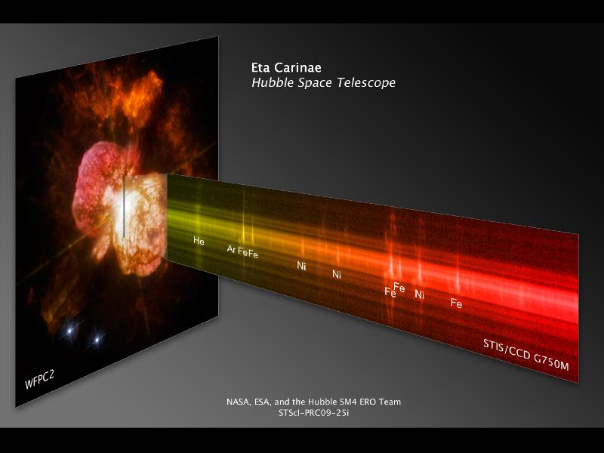
Eta Carinae
The signature balloon-shaped clouds of gas blown from a pair of massive stars called Eta Carinae have tantalized astronomers for decades. Eta Carinae has a volatile temperament, prone to violent outbursts over the past 200 years.
Observations by the newly repaired Space Telescope Imaging Spectrograph (STIS) aboard NASA's Hubble Space Telescope reveal some of the chemical elements that were ejected in the eruption seen in the middle of the 19th century.
Source: NASA
This is "the day many of us have all been waiting for to celebrate Hubble's new beginning," said Ed Weiler, associate administrator for NASA's Science Mission Directorate at NASA Headquarters in Washington, D.C.
Hubble also snapped pictures of a densely packed star cluster, an eerie "pillar of creation," and a "butterfly" nebula.
Scientists also released spectroscopic observations that slice across billions of light-years to probe the cosmic-web structure of the universe and map the distribution of elements that are fundamental to life as we know it.
Sen. Barbara A. Mikulski, D-Md., who has provided key support for Hubble and NASA in Congress, unveiled the images at NASA Headquarters. She was given the honorary title "Godmother of Hubble."
"I fought for the Hubble repair mission because Hubble is the people's telescope," said Mikulski, chairwoman of the Commerce, Justice and Science Appropriations Subcommittee that funds NASA.
Hubble's new instruments, including the Wide Field Camera 3 a new super-sensitive spectrograph, were installed on the 19-year-old telescope by shuttle astronauts during a 13-day service mission in May. The mission also revived two instruments — Hubble's main ACS and a versatile imaging spectrograph — that were never designed to be fixed in space.
The new instruments are more sensitive to light and, therefore, will improve Hubble's observing efficiency significantly. It is able to complete observations in a fraction of the time that was needed with prior generations of Hubble instruments.
The WFC3 was actually used to take a picture of Jupiter's new black spot — thought to have been caused by a comet collision — back in July, but the camera wasn't yet fully calibrated then.
Despite a few bumps in the three-month checkout, Hubble's systems and instruments are all up and running now.
NASA's new administrator Charlie Bolden was also on hand to congratulate the scientists and astronauts on Hubble's new lease on life. Bolden was one of the astronauts on the shuttle mission that deployed Hubble in 1990.
"Hubble has a special place in my heart," Bolden said. Through Hubble's past and future observations, "our view of the universe and our place within it will never be the same," he added.

